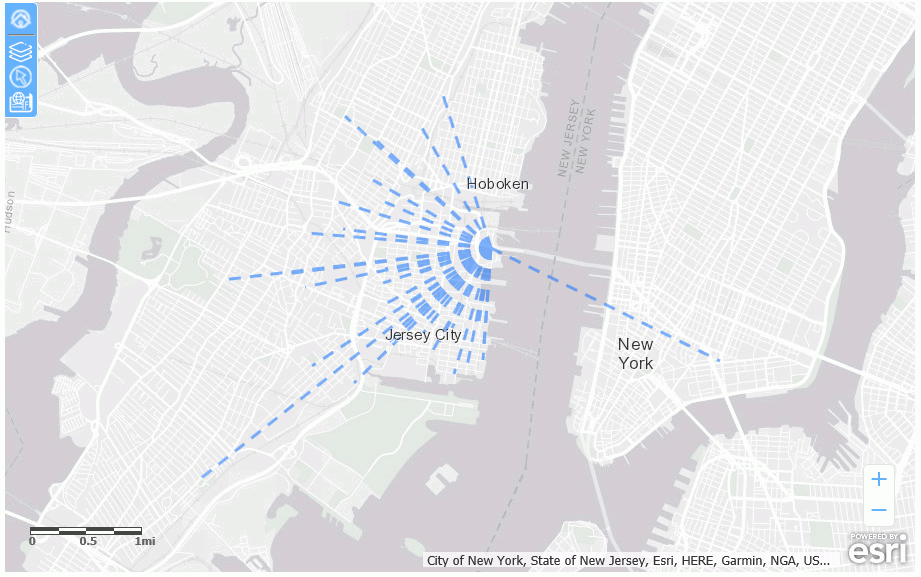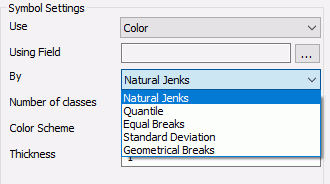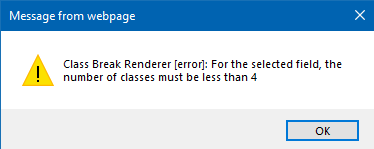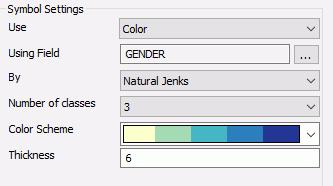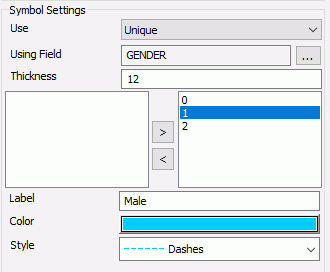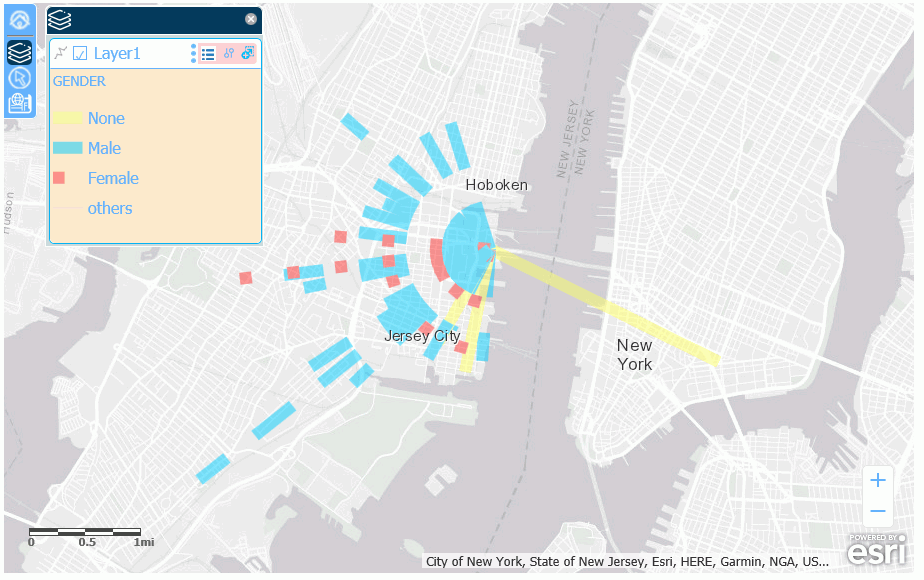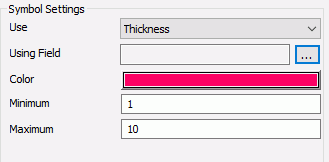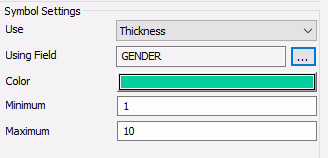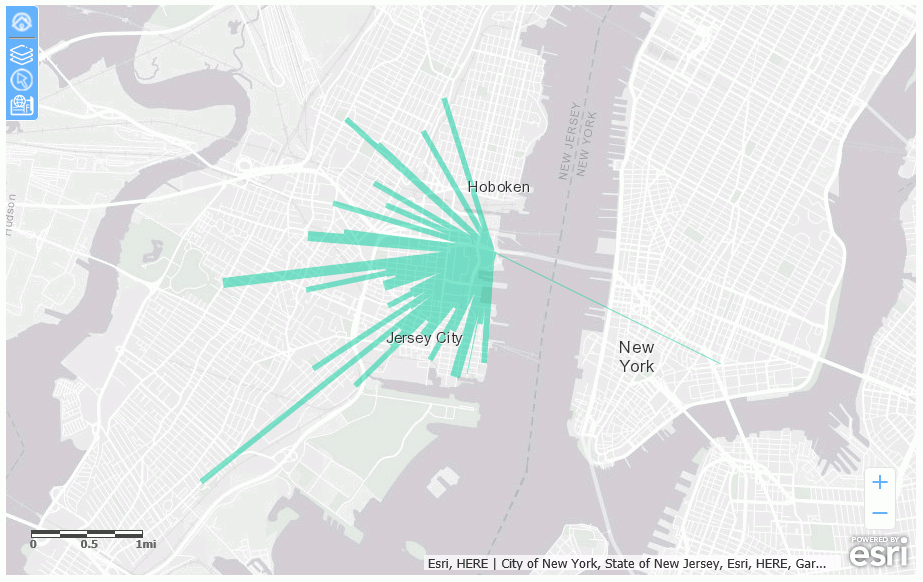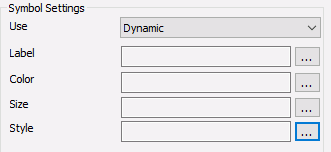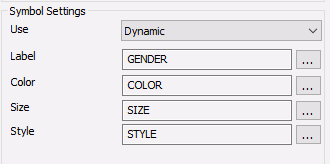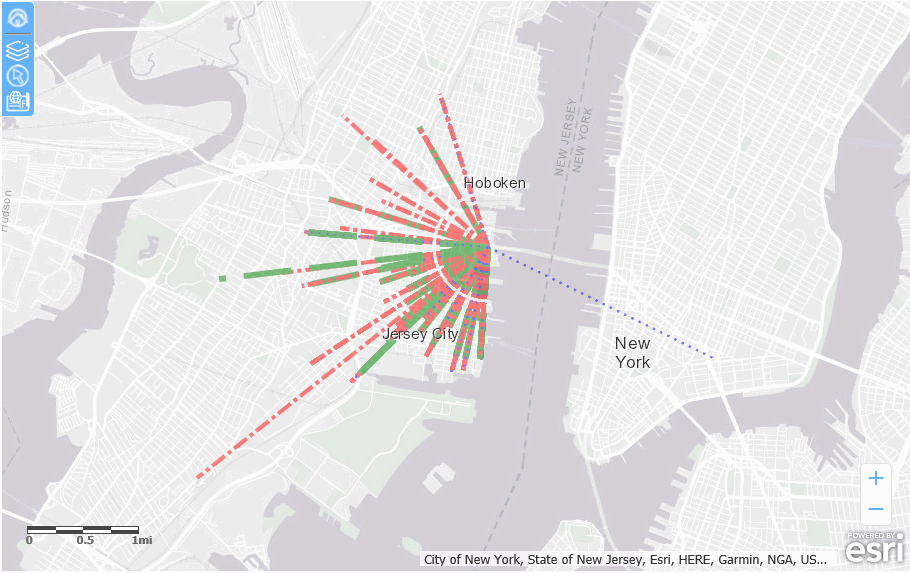|
In this section: |
Geographical line data places lines on the map layer that can be configured with a wide range of size, color, and thickness options.
The following image shows the Symbol Settings section of the ESRI Object Settings panel for a point-based data layer. Some selections may open additional options not shown in this image.

The following table summarizes the types of symbology available for a line layer. Each type of symbology is illustrated in one of the sections that follows.
|
Type of Symbol (Subtype) |
Description |
Configuration Fields |
|---|---|---|
|
Single |
Uses a single line |
Use. Selects the type of symbols, Single for this option. Color. User selects a line color. The default is red. Thickness. User specifies the line thickness in pixels. The default is 12 and the maximum is 99. Style. User selects one of the following line styles:
For more information, see Configuring Line Symbology Using a Single Line Symbol. |
|
Color |
User specifies a field to be used to classify line colors. |
Use. Selects the type of symbols, Color for this option. Using Field. User selects a field in the request to be used to classify the lines by color. By. User selects from the following classification methods.
Number of Classes. User specifies the number of color breaks. The default is 5. Color Scheme. User selects the color palette for the lines. The default uses shades of green. Thickness. User specifies the line thickness in pixels. The default is 1 and the maximum is 99. For more information, see Configuring Line Symbology Using Color. |
|
Thickness |
User specifies a field to be used to classify the thickness of the lines. |
Use. Selects the type of symbols, Thickness for this option. Using Field. User selects a field in the request to be used to classify the lines by thickness. Color. User selects a color for the lines. Minimum. Specifies the minimum thickness. The default is 1. Maximum. Specifies the maximum thickness. The default is 10. For more information, see Configuring Line Symbology Using Thickness. |
|
Dynamic |
The WebFOCUS request that provides the location dimension defines the line properties. |
Use. Selects the type of symbols, Dynamic for this option. Label. User specifies a field in the request that contains the label text for the legend. The default is the AS name, title, or field name. Color. User specifies a field in the request that defines the colors for the markers. Size. User specifies a field in the request that defines the thickness in pixels for the lines. The default is 12 and the maximum is 99. Style. User specifies a field in the request that contains styles for the lines. For more information, see Configuring Dynamic Line Symbology. |
|
Unique |
User selects line properties for each value of a dimension in the request. |
Use. Selects the type of symbols, Unique for this option. Using Field. User selects an alphanumeric dimension in the request and assigns marker properties for each value. Thickness. User specifies a thickness in pixels for the lines. The default is 12 and the maximum is 99. Dimension Values box. A box is populated with the dimension values. The user can select values and move them to the right, then assign line properties to those selected values. Label. User specifies text to display in the legend for each selected dimension value. Color. The user selects a color for each selected dimension value. Style. The user selects a line style for each selected dimension value. For more information, see Configuring Unique Symbology for Lines. |
Note: The symbol dynamically changes size with the zoom level of the map output for a single symbol, but not for a symbol that is unique, dynamic, based on thickness, or based on color.

